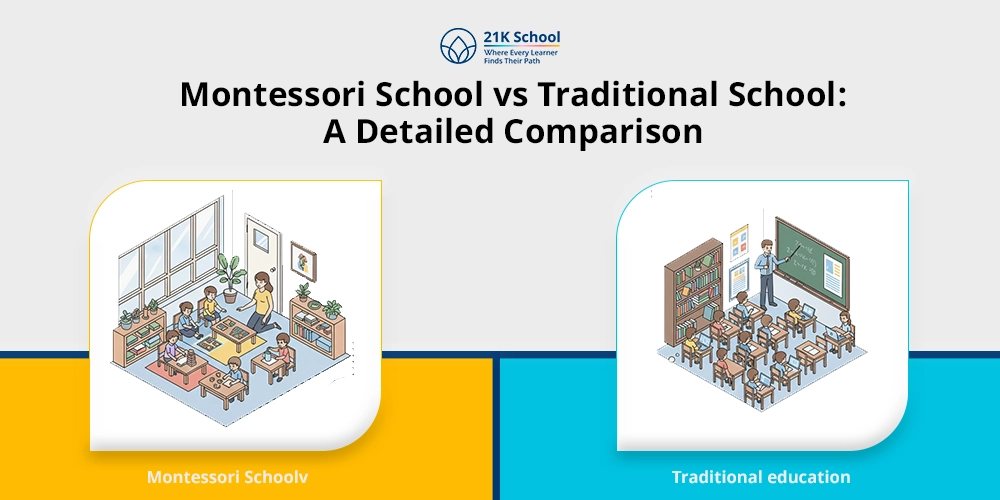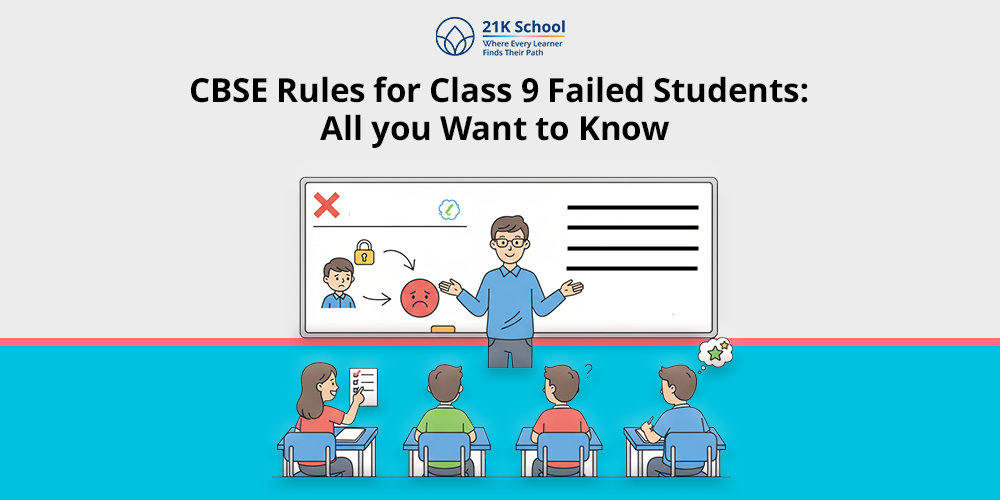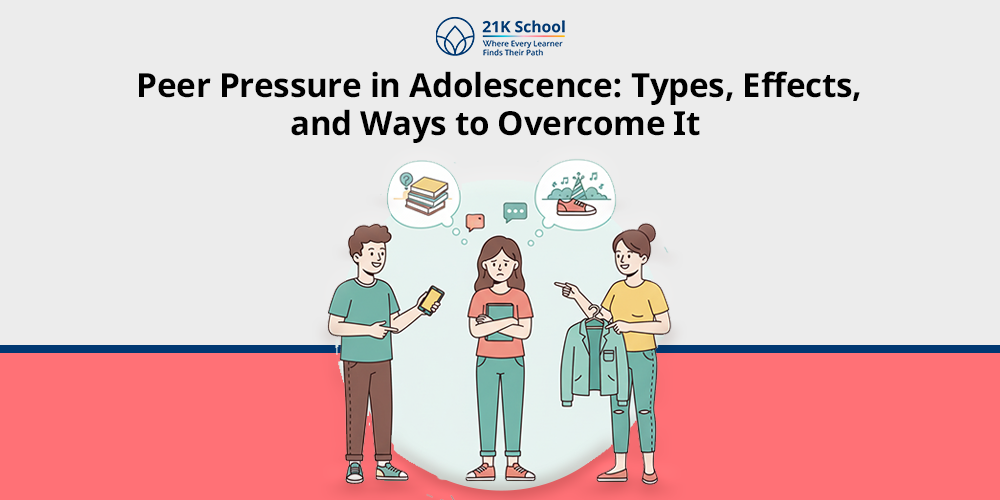
In this changing education system different kinds of concepts just like differentiated learning, flipped learning and continuous learning are the pillars of modern education.
But have you ever thought about why this kind of learning is so important for academic growth and development?
If not, you are at the right place now! The academic success and personal growth depends on consistency and continuous approaches.
Read how to concentrate on studies to improve the academic performance of kids.
While learning different kinds of skills, continuity is one of the ideal approaches. This ongoing knowledge is known as continuous learning.
But the question is how continuous learning helps students to get their desired results. In this blog we will understand everything in detail.
Let’s begin!
Contents
- What is Continuous Learning?
- Importance of Continuous Learning in Education
- 7 Principles of Continuous Learning
- Benefits of Continuous Learning
- Continuous Learning Vs Lifelong Learning: Key Difference
- Strategies to Foster Continuous Learning
- Role of Parents in Continuous Learning
- Continuous Learning Examples
- Challenges and Solutions to Overcome Continuous Learning
- Future of Continuous Learning
- Final Thoughts: Encourage Curiosity, and Self-improvement
What is Continuous Learning?
Continuous learning is not just an approach, it’s a mindset that fuels lifelong curiosity and achievement. Let’s elaborate it’s true meaning:
Continuous learning fosters adaptability, enhances skills, and promotes lifelong growth which makes students more prepared for a rapidly changing world.
With this unbreakable learning students acquire different kinds of skills that become a path of success, strength and development.
Whether it’s learning a new language, developing creative drawing ideas or problem-solving skills, understanding complex theories, continuous learning reinforces curiosity and adaptability in students.
Importance of Continuous Learning in Education
Education landscape shifts from time to time and so do our learning concepts. Education is not about learning with traditional approaches.
It’s all about understanding, analysing and updating yourself to fulfill the new generation requirements. To do so, continuous learning is important.
Key points to understand the importance of continuous learning in education are:
1. Skills Development
To acquire new skills and improve existing ones, continuous learning is best. For new skills development students need long term vision.
Continuous learning equips individuals with the knowledge and abilities needed to thrive in a rapidly changing world.
For concentration and ongoing learning you must read how to develop critical thinking skills in students.
2. Career Advancement and Personal Growth
Career advancement and personal growth enables individuals to stay relevant in their fields, gain new skills, and enhance their overall capabilities.
This ultimately leads to better job satisfaction, career progression, and a higher salary for students.
3. Lifelong Learning Mindset
The ongoing learning builds a lifelong learning mindset to enhance adaptability, critical thinking, and a growth of students.
These points are essential for their success in this rapidly changing world.
4. Problem-Solving and Critical Thinking
Continuous learning is significant for problem-solving and critical thinking in educational success.
It promotes the development of effective strategies for overcoming challenges, enhances analytical skills, and fosters self-reflection.
7 Principles of Continuous Learning
To understand continuous learning one needs to know the 7 principles to achieve success.
1. Self-Directed Learning
Self-directed learning means individuals take self charge of their learning journey by setting goals, selecting resources, and evaluating their progress.
Continuous learning is a way to promote ongoing development, keeping learners updated with industry trends and knowledge.
Now students can take initiative, find their own learning requirements, set goals, and evaluate outcomes. This independence builds lifelong learning habits.
2. Diversified Learning Methods
Diversified Learning Methods is a key principle that directly impacts students growth and adaptability. It includes formal and informal learning.
Achieving success is possible by providing opportunities to apply knowledge, encourage reflection, and foster a mindset of ongoing learning.
Books, podcasts, online courses, workshops, peer discussions are some common examples of diverse learning styles.
Know more about different online courses for professional development.
3. Growth Mindset
The growth mindset refers to the belief that new skills can be developed by students’ dedication and efforts. It is essential to have a positive mindset to concur something.
This helps students in resilience, innovation, embrace challenges, value effort over innate talent and the ability to learn from feedback.
4. Dedicated Time
As a student, giving a dedicated time leads to continuous learning. This can be achieved by concentration for learning and a supportive environment.
These key principles include open-mindedness, consistency, resilience, and a focus on sustainable learning practices.
Starting with time management, a dedicated schedule for daily or weekly learning makes the habit sustainable.
Also read the importance of time management for students.
5. Clear Learning Goals
One of the cornerstones in this kind of learning is clear learning goals. It works as a road map for personal and professional development.
Learning goals includes defining specific, measurable, achievable, relevant, and time-bound objectives.
It is a powerful tool that helps in tracking progress and maintaining motivation.
6. Relevance
One of the key principles is relevance in continuous learning. It promotes the ongoing expansion of knowledge and skills.
This principle is essential for adaptability, professional advancement, and personal growth in a rapidly changing world.
Here students can learn with real life applications. This makes connections between academic content and everyday life fosters deeper understanding and retention.
7. Reflection
Reflection includes analyzing experiences, identifying areas for improvement, and applying new knowledge in meaningful ways.
Students’ regular reflection on what was learned, how it was learned, and what could be improved helps in long-term retention.
Students can also discuss these points with other students to identify the improvements.
Benefits of Continuous Learning
While reading about continuous learning, exploring benefits will help you in understanding how to implement it in the right way.
Here’s a more detailed look at the benefits:
1. Career Advancement
One significant benefit is the career advancement of students.
And this can be done by enhancing skills, making individuals more adaptable and competitive in the job market, and increasing their earning potential.
2. Skill Enhancement and Upskilling
Students skill enhancement and upskilling leads to career growth, improves workforce performance, and drives innovation.
Students need to acquire new skills or enhance existing ones. From coding to communication, skill development improves employability and effectiveness.
3. Leadership Development
Leadership development has lots of benefits for students’ education especially in ongoing learning.
It enhances individuals decision-making, improves emotional intelligence, increases innovation, and a stronger ability to navigate complex business environments.
To enhance content learning one needs to learn how to develop leadership skills in students ?
4. Mental Health Benefits
Continuous learning improves students’ mental health and enhances reading, writing and critical thinking and problem solving skills.
Benefits of mental health also include enhancing cognitive function, reducing stress and anxiety, and fostering a sense of purpose and fulfillment.
5. Increased Confidence & Problem-Solving Skills
Increased confidence & problem-solving skills is one of the significant benefits. Here individuals gain a sense of accomplishment and competence, boosting their self-esteem and confidence.
When students understand the subjects correctly their confidence grows, and they become more adept at solving problems creatively and efficiently.
Continuous Learning Vs Lifelong Learning: Key Difference
Let’s explore the key differences between continuous learning vs lifelong learning. Understand the different ways to promote lifelong learning in kids.
| S No. | Particulars | Continuous Learning | Lifelong Learning |
| 1. | Focus: | Continuous learning is primarily aimed at improving skills and knowledge relevant to a specific work or career. | Lifelong learning includes a broader range of educational experiences. This includes personal development, hobbies, and acquiring knowledge for personal enrichment. |
| 2. | Context: | It mostly takes place within a workplace or educational setting with specific goals and objectives. | Lifelong learning is not limited to any professional settings. However, it can be self-directed and driven by personal interests and goals. |
| 3. | Scope: | It is limited to certain phases or areas. | It spans across entire life and all areas. |
| 4. | Goal: | This kind of learning often has specific and measurable goals related to work performance. | Lifelong learning can be seen as more open-ended goals related to personal enrichment or a desire to learn something new. |
| 5. | Example: | Examples such as students attending training courses, workshops, or online modules to update skills in a particular field. | Examples like students reading a book, taking a class on a new subject, or learning a new language for personal enjoyment. |
Strategies to Foster Continuous Learning
To improve learning in the 21st century teachers, students and parents need to implement strategies.
Let’s explore each of them in detail:
1. Create a Learning Culture
Various e-learning platforms and institutions can create environments where learning is valued and rewarded.
This learning culture involves mentorship, knowledge-sharing, and celebrating achievements of students’ work.
2. Support Formal Education and Training
By encouraging participation in workshops, courses, and certifications support formal education and training.
Students get access to learning resources, integrating learning into daily work, recognizing achievements, and leveraging technology.
3. Provide Access to Learning Resources
Schools need to provide open access to learning resources to foster ongoing learning.
This includes offering online learning platforms, internal knowledge-sharing systems, and external conferences and seminars. By investing in technology like mobile learning apps for students.
Before proceeding, you must read how to choose the right online learning platform.
4. Integrate Learning into Daily Work
Integrate learning into daily work helps in long term learning which leads to academic success.
Students can choose strategies like embedding learning in work processes, encouraging knowledge sharing, and creating learning opportunities.
Role of Parents in Continuous Learning
Parents play a crucial role in students’ lives while learning a new skill. They should present to encourage kids and provide help whenever needed.
Here’s what parents can help their children:
1. Homework Help
Parents play an essential role in kids’ learning. From helping in homework to cleaning the developing essential life skills.
Parents can guide students in ensuring a supportive home environment, providing homework tips and encouraging positivity.
2. Encouraging Curiosity
By creating a stimulating and supportive environment, encouraging curiosity, and exploration as a desirable trait, parents can ensure a kid’s lifelong learning journey.
It helps in student engagement in the classroom.
3. School Engagement
As parents it’s their responsibility to ensure kids are equally engaged in both home and school.
By providing a supportive home environment, fostering a love of learning, and actively participating in school activities kids engage in school effectively.
4. Regular Communication with Teachers
Regular communication is a key to students’ academic success and strong coordination in a positive learning environment.
It also supports early intervention, and allows parents to actively participate in their child’s education.
5. Supporting Mental and Emotional Wellbeing
Children’s mental and emotional wellbeing are two key points in which kids need high attention from parents.
With the help of open communication, establishing routines, and encouraging a balanced lifestyle.
Continuous Learning Examples
Some commonly used examples such as:
- Webinars and Online Workshops:
Students learning from online platforms like 21k School can attend webinars and online workshops.
This helps them to gain insights from industry experts and stay updated on trends and best practices in their field.
- Microlearning Platforms:
Different kinds of microlearning platforms like Coursera, LinkedIn Learning, etc are ideal for kids.
They offer bite-sized lessons that fit easily into a daily routine, making continuous skill development manageable and engaging.
- Peer Collaboration and Forums:
Peer Collaboration and Forums is ideal to connect and collaborate with others. Students should engage in discussion boards, group projects, or online communities.
This allows students to learn from other students, share resources, and develop critical thinking through diverse perspectives.
These methods help students to stay current, reinforce their knowledge, and adapt to evolving educational and professional landscapes through continuous learning.
Challenges and Solutions to Overcome Continuous Learning
Continuous learning has lots of benefits which guides students towards success. However, benefits come with some challenges.
Let’s understand each challenge in depth to overcome and learn positively.
1. Difficulty with Learning Strategies
Difficulty with learning strategies leads to lack of clarity, information overload, insufficient practice, and low confidence.
- Solution: To overcome this challenge kids need to apply different strategies like setting clear goals, finding appropriate learning styles, creating structured plans, and seeking support.
2. Lack of Motivation
Kids easily lack the motivation to learn new things due to various challenges like a lack of interest, external distractions, unrealistic goals, and a feeling of not being supported.
- Solution: To overcome this problem kids need to find the barriers setting clear and achievable goals, providing resources and support.
3. Fear of Failure
Challenges such as Fear of Failure are common for every student. This will create self doubt and demotivation of learning new things.
- Solution: To resolve this problem, seeking support and celebrating small wins can also help build confidence and resilience.
Future of Continuous Learning
The future demands unique, new skills and an effective learning approach. With artificial intelligence, automation, and evolving societal needs, learning must become an integral part of everyday life.
Schools and institutions must transition from static curricula to flexible learning environments. Personalization, digital tools, and real-world applications will dominate the learning space.
Here’s everything in elaborated version:
1. Technology Integration
Future of education is all about Technology Integration. By enabling personalized learning experiences, access to diverse resources, and the development of 21st-century skills.
It’s time to shift from the traditional approach to new and modern approaches that build the strength of learning.
2. Personalized Learning
Personalized learning refers to an approach that adapts instruction and content to each learner’s unique needs.
It is quickly emerging as the future of lifelong education. Driven by AI and data analytics, this method delivers a more engaging, efficient, and impactful learning experience, resulting in improved outcomes and higher levels of student satisfaction.
3. Social and Self-Directed Learning
With continuous development the future of learning includes social and self-directed learning. By personalized and flexible learning kids can achieve their goals.
It is beneficial to foster collaboration, knowledge sharing, and mentorship, creating a supportive environment for students.
4. Focus on 21st-Century Skills
To enhance the future of ongoing learning, kids need to focus on 21st-century skills. It prepares individuals for a rapidly changing world.
Key skills include critical thinking, creativity, collaboration, communication, information literacy, media literacy, and technology literacy.
5. Global Learning Platforms
Global learning platforms such as 21K school are becoming increasingly important for students.
21K school offers personalized experiences, flexible accessibility, and opportunities for international collaboration. It’s time to assess transforming education to concur success.
Final Thoughts: Encourage Curiosity, and Self-improvement
Continuous learning is an ideal skill to ensure success in both personal and professional success. It empowers individuals to grow effectively without any huddles.
This encourages curiosity, fosters resilience, and builds the foundation for a fulfilling and impactful life.
No matter if you are a student, teacher, parent, or lifelong learner, the journey never ends. Choose the right online platform like 21K school.
By embracing the strategies, benefits and principles of continuous learning, anyone can unlock limitless potential for themselves and future generations.



